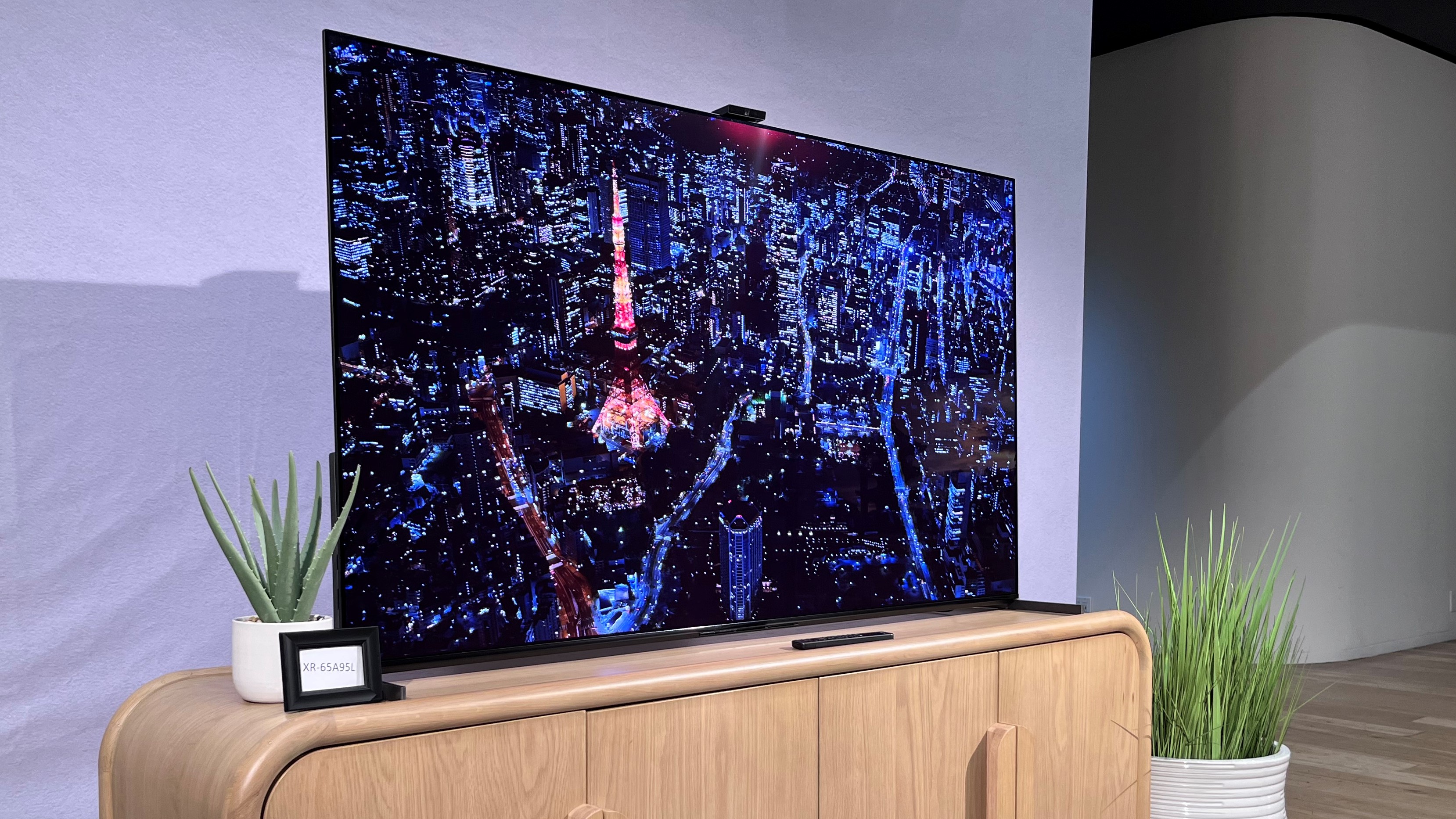Next-gen OLED TVs could boost brightness without a price hike – here’s how

There's great news for the future of the best OLED TVs, because the next big leap forward for the tech could cut power consumption by 25%, according to one of the companies taking the lead on this development. That's possible with the use of a new blue phosphorescent material used in the pixels, or so says the VP of Business Development of Universal Display, which is working on the tech.
In OLED TVs in particular, efficiency has a huge impact on their brightness – most OLED TVs could go brighter if more power was pumped into them. But that means they'd run hotter, which would mean the screens could die earlier and be more likely to develop burn-in.
That's why it's so exciting that the development of a new tech for blue pixels could improve efficiency that much. Better energy efficiency means heat is reduced, which then means you can push in more power to improve brightness without overheating the panel.
Now, new OLED TVs getting brighter isn't exactly news – the LG G3 and Samsung S95C this year both took a huge leap forward in brightness. But they also took a big leap forward in "being very expensive," and it sounds promising that the improvements from blue phosphor might not cost you more.
"The application of the first-generation blue phosphorescent OLED material can reduce the power consumption of the entire OLED display by 24-25%," claims Mike Hack, Vice President of Universal Display to The Elec (reported in English by FlatpanelsHD). "The proportion of blue phosphorescent in the panel material cost is very small, so it would be cost-effective."
Reportedly, Universal Display's new tech is currently being evaluated by Samsung Display and LG Display – the only two makers of OLED TV panels – with potential to become available to manufacturers in 2024, so 2025's TVs may be the first to make use of it.
Blue is the less-warm color
The more efficient blue phosphorescent material that's at the heart of this development has been coming for a while. Last December, Universal Display started talking about how its new blue emitters were on track for a 2024 introduction, and would massively improve efficiency. And in the recent past, it was reported that the technology was being considered by both LG and Samsung.
Sign up for breaking news, reviews, opinion, top tech deals, and more.
It's the "phosphorescent" part that's important here. Phosphorescent displays are nearly 100% internally efficient, meaning that all of the light they produce is emitted from the material, to be directed towards your eyes (ideally – tech such as micro lens arrays help make sure the last part happens). Currently, red and green OLED sub-pixels can be made with phosphorescent material – but blue can't for regular consumer products. Blue is made from florescent materials that are only 25% efficient, meaning that the vast majority of energy that goes into them doesn't produce light you can see.
So if one more color can be made more efficient with almost no increase in cost of materials, it could be an instant leap forward for what all OLED TVs can do… but especially for Samsung's QD-OLEDs.

QD-OLED TVs are slightly different to regular OLED TVs, because they don't use red, green and blue sub-pixels to create different colors. Instead, they have blue (and green) OLED pixels only, which shine through a color-changing layer of quantum dots. At the moment, Samsung has to use multiple layers of blue pixels to get the stunning levels of brightness that we measured in our Samsung S90C review and Samsung S95C review.
So if blue goes from 25% internal efficiency to 100%, QD-OLED TVs could actually become much easier and actually cheaper to produce at the same levels of brightness. Samsung has been working on its own version of blue phosphorescent tech, presumably for this very reason.
Of course, with blue phosphorescent tech still a little way off being in any televisions yet, there's plenty of scope for some twists along the away. But it seems clear that many of the best TVs are going to get even better.
Update: this article has been updated with corrected translations of Mike Hack's quotes.
You might also like

Matt is TechRadar's Managing Editor for Entertainment, meaning he's in charge of persuading our team of writers and reviewers to watch the latest TV shows and movies on gorgeous TVs and listen to fantastic speakers and headphones. It's a tough task, as you can imagine. Matt has over a decade of experience in tech publishing, and previously ran the TV & audio coverage for our colleagues at T3.com, and before that he edited T3 magazine. During his career, he's also contributed to places as varied as Creative Bloq, PC Gamer, PetsRadar, MacLife, and Edge. TV and movie nerdism is his speciality, and he goes to the cinema three times a week. He's always happy to explain the virtues of Dolby Vision over a drink, but he might need to use props, like he's explaining the offside rule.